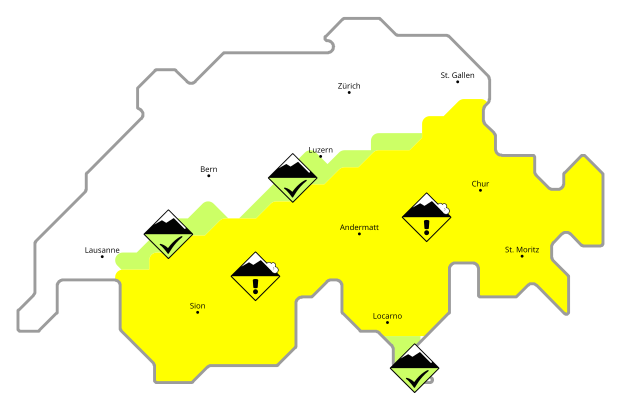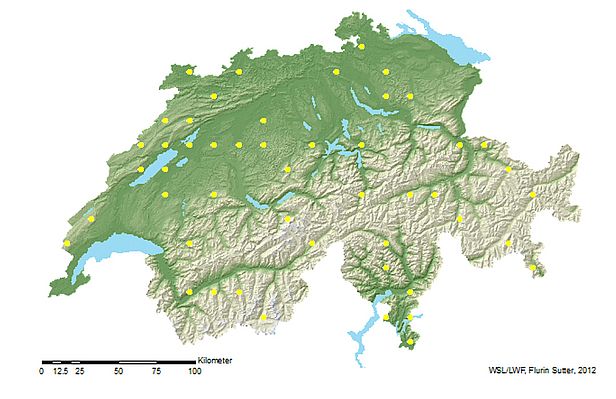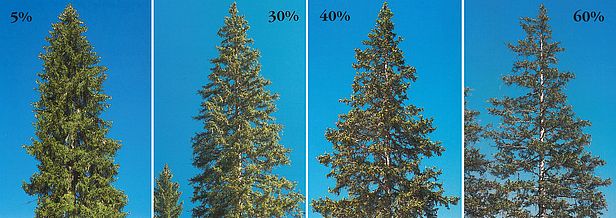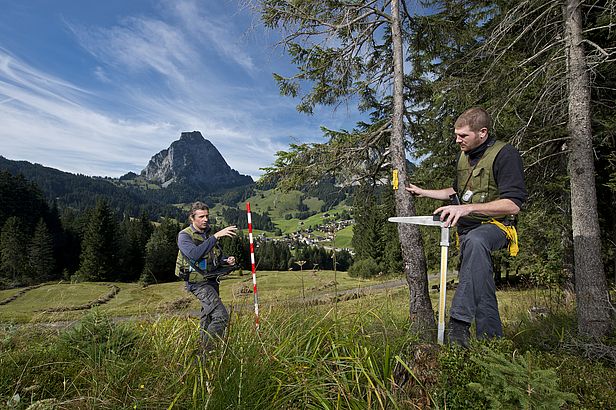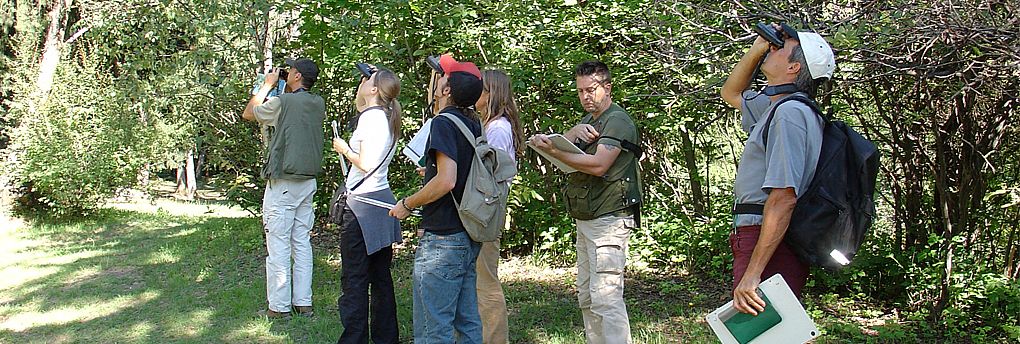
Methods of the Sanasilva Inventory
Every summer, we examine 1,100 trees in Swiss forests – not under a magnifying glass, but with binoculars – and check in particular if their crown colour and density are "normal". These trees grow on 50 sample plots that are part of the Sanasilva Inventory created in 1985.
We have assessed crown condition in Swiss forests since 1985. We use international standards for defoliation, defined as the percentage of trees displaying more than 25% leaf or needle loss as compared to a reference tree with full foliage. We also assess how many trees have an abnormal amount of yellow leaves or needles.
The size of the systematic sample grid has been reduced over the years. From 1985 until 1992 we assessed approximately 8,000 trees on nearly 700 plots placed on a 4x4 km grid. In 1993, 1994 and 1997 approximately 4,000 trees were assessed on a 8x8 km subgrid. In 1995, 1996 and 1998 approximately 1,100 trees on a 16x16 km subgrid were assessed. This number has remained unchanged since then. The 16x16 subgrid is part of the European Level-I monitoring that covers 6,000 plots in 42 countries.
Each plot consists of two circles with identical center. The outer circle has a radius of 12.62 m (500 m2) and the inner circle has a radius of 7.98 m (200 m2). All trees with a diameter at breast height of at least 12 cm in the inner circle and with a minimum breast height diameter of 36 cm in the outer circle will be assessed. An identical satellite plot has been established 30 m due North of each plot.
The field assessment is carried out in July and August. Each inventory crew consists of two persons. One is responsible for the tree assessment and the other for the data entry. Data are collected using tablet pc's and a data entry software called "Field-Map". Responsibilities are switched from plot to plot. During the inventory on the LWF long-term research sites, 10 percent of the plots are assessed by a second team as part of a consistency check.
Main indicators assessed in the Sanasilva Inventory
The Sanasilva Inventory focusses on three groups of indicators for tree condition:
- Defoliation is assessed as the percent defoliation of a tree in comparison to a reference tree of same species and age growing at the same site with maximum foliage, the percentage of this defoliation that cannot be attributed to a known cause, the part of tree crown with above average defoliation, the percentage of defoliated branches and twigs and their location in the tree crown.
- Discolouration is recorded as the distance of the average tree crown colour from a reference crown colour for this species (assessed in hue, value and chroma using Munsell color charts for plants), the percentage and the location of up to two colours different to this reference colour.
- Increment is defined as the change of tree size variables between two or more assessment periods (i.e. diameter at breast height, tree height, tree crown length, average crown width).
- Obviously, we also record the number of trees that died since the previous inventory as well as the number of those that have reached the minimum size required to enter the inventory.
In addition to these, we assess the following parameters: identified causes of defoliation, tree crown competition, occurrence of epiphytes, mistletoe and climbers in the crown.
Crown condition is a good indicator of the amount a stress to which a tree is submitted. However, general conclusions about forest health can only be drawn when combining crown condition with other indicators such as mortality, increment and availability of mineral nutrients.
